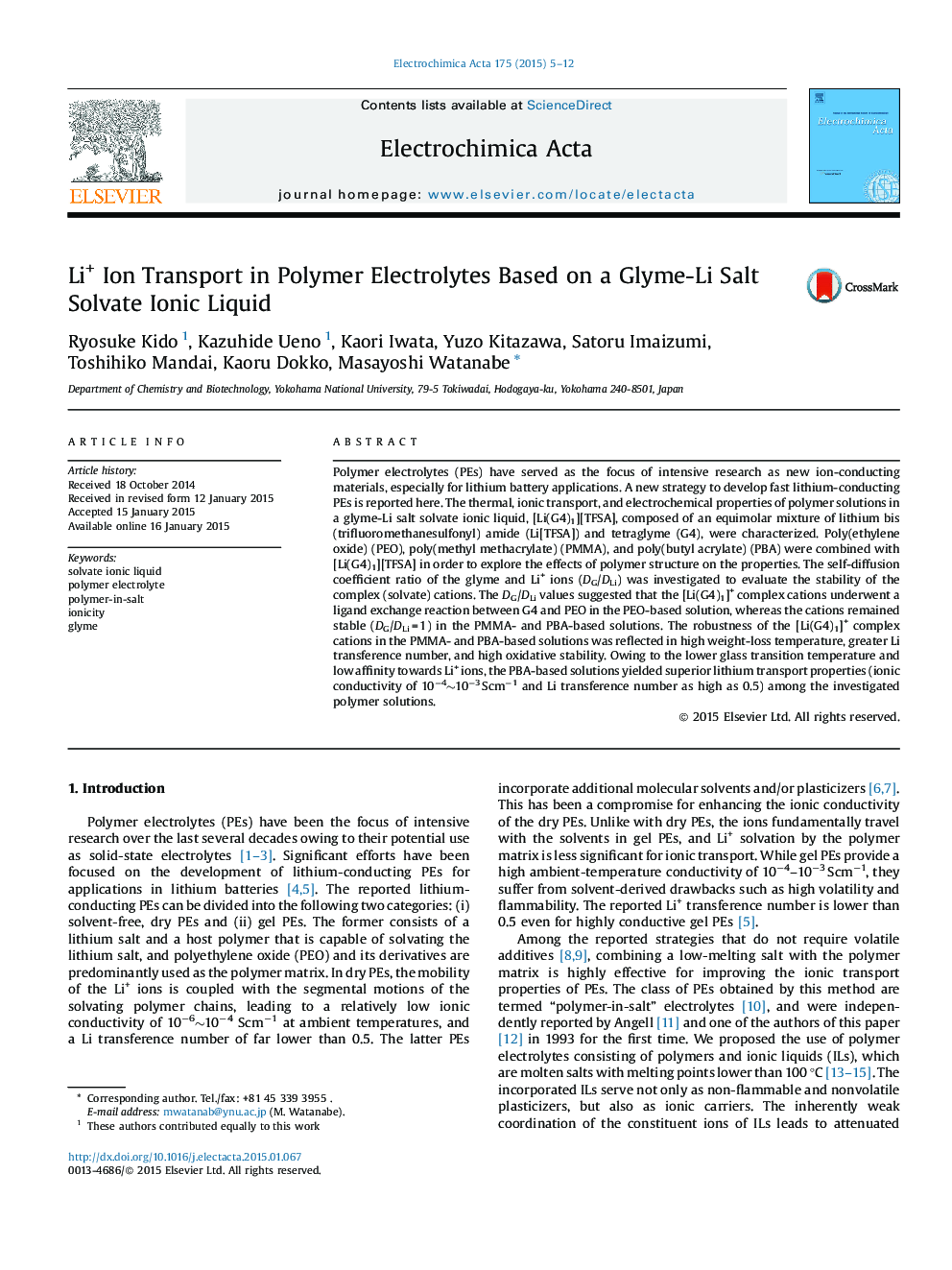| Article ID | Journal | Published Year | Pages | File Type |
|---|---|---|---|---|
| 183617 | Electrochimica Acta | 2015 | 8 Pages |
ABSTRACTPolymer electrolytes (PEs) have served as the focus of intensive research as new ion-conducting materials, especially for lithium battery applications. A new strategy to develop fast lithium-conducting PEs is reported here. The thermal, ionic transport, and electrochemical properties of polymer solutions in a glyme-Li salt solvate ionic liquid, [Li(G4)1][TFSA], composed of an equimolar mixture of lithium bis(trifluoromethanesulfonyl) amide (Li[TFSA]) and tetraglyme (G4), were characterized. Poly(ethylene oxide) (PEO), poly(methyl methacrylate) (PMMA), and poly(butyl acrylate) (PBA) were combined with [Li(G4)1][TFSA] in order to explore the effects of polymer structure on the properties. The self-diffusion coefficient ratio of the glyme and Li+ ions (DG/DLi) was investigated to evaluate the stability of the complex (solvate) cations. The DG/DLi values suggested that the [Li(G4)1]+ complex cations underwent a ligand exchange reaction between G4 and PEO in the PEO-based solution, whereas the cations remained stable (DG/DLi = 1) in the PMMA- and PBA-based solutions. The robustness of the [Li(G4)1]+ complex cations in the PMMA- and PBA-based solutions was reflected in high weight-loss temperature, greater Li transference number, and high oxidative stability. Owing to the lower glass transition temperature and low affinity towards Li+ ions, the PBA-based solutions yielded superior lithium transport properties (ionic conductivity of 10−4∼10−3 Scm−1 and Li transference number as high as 0.5) among the investigated polymer solutions.
Graphical abstractFigure optionsDownload full-size imageDownload as PowerPoint slide
